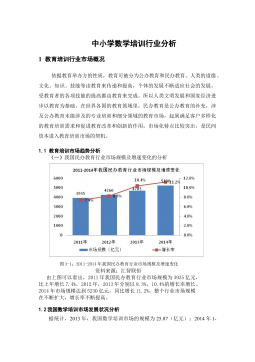中国企业跨国并购中的文化整合策略
摘要1摘要自20世纪90年代以来,跨国并购以30.2%的平均增长速度超过了15.1%的国际直接投资的增长速度。在全球范围内,跨国直接投资当中有80%以上是通过并购的方式进行的。在中国,海外并购总额从2003年的不到50亿美元,发展到2008年的超过400亿美元。但是,在全球范围内,并购成功率平均只有43%,而中国企业海外并购的成功率还不到10%。事实上,成功接管一家企业并不意味着并购的最终成功,反倒会蕴含着意想不到的失败。原因在于,企业并购后需要对各个方面进行整合,否则并购的优势就不能发挥出来。而从综合并购整合的实践看,跨文化整合的失败是导致跨国并购最终失败的主要原因。因此,对中国企业海外并购...
相关推荐
-
THE COLOR FACTORY ——色彩心理康复体验中心设计VIP免费

 2024-09-24 13
2024-09-24 13 -
中英大学生创业教育参与主体比较研究VIP免费

 2024-09-30 58
2024-09-30 58 -
中小学数学培训行业分析VIP免费

 2024-09-30 21
2024-09-30 21 -
英国大学生创业教育保障体系及其经验借鉴VIP免费

 2024-09-30 67
2024-09-30 67 -
我国大学生创业教育的现状问题及对策研究VIP免费

 2024-09-30 41
2024-09-30 41 -
浅谈大学生创业教育中加强思想政治工作的对策问题VIP免费

 2024-09-30 23
2024-09-30 23 -
关于我国大学生创业教育目标定位的思考VIP免费

 2024-09-30 71
2024-09-30 71 -
大学生创业教育引入SIYB项目的分析研究VIP免费

 2024-09-30 57
2024-09-30 57 -
大学生创业教育对策研究VIP免费

 2024-09-30 53
2024-09-30 53 -
大学生创业教育存在的问题及对策浅析VIP免费

 2024-09-30 65
2024-09-30 65
相关内容
-

中英大学生创业教育参与主体比较研究
分类:高等教育资料
时间:2024-09-30
标签:无
格式:PDF
价格:12 积分
-

中小学数学培训行业分析
分类:高等教育资料
时间:2024-09-30
标签:无
格式:DOCX
价格:12 积分
-

英国大学生创业教育保障体系及其经验借鉴
分类:高等教育资料
时间:2024-09-30
标签:无
格式:PDF
价格:12 积分
-

大学生创业教育对策研究
分类:高等教育资料
时间:2024-09-30
标签:无
格式:PDF
价格:12 积分
-

浅析大学生创业教育内容体系和模式
分类:高等教育资料
时间:2024-09-30
标签:无
格式:PDF
价格:12 积分






